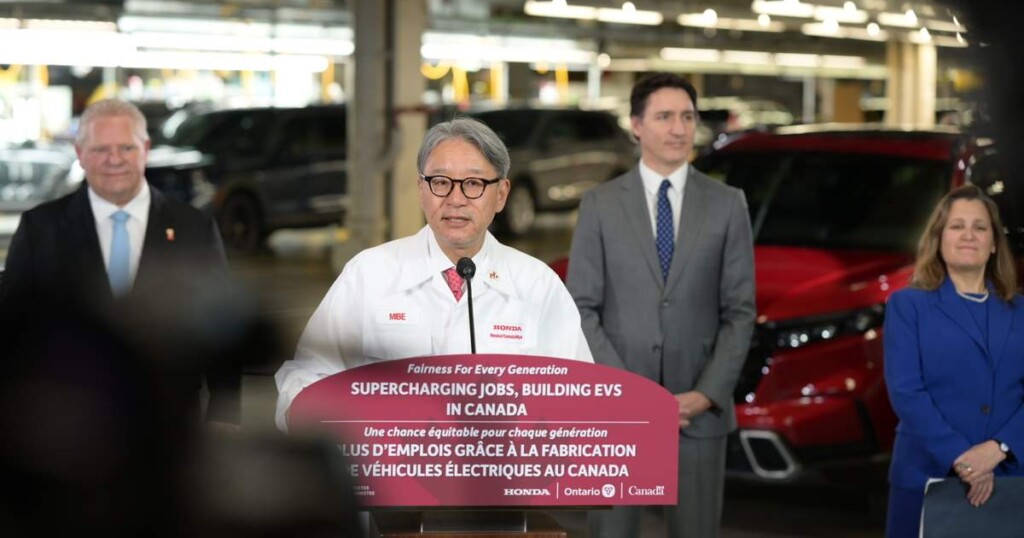
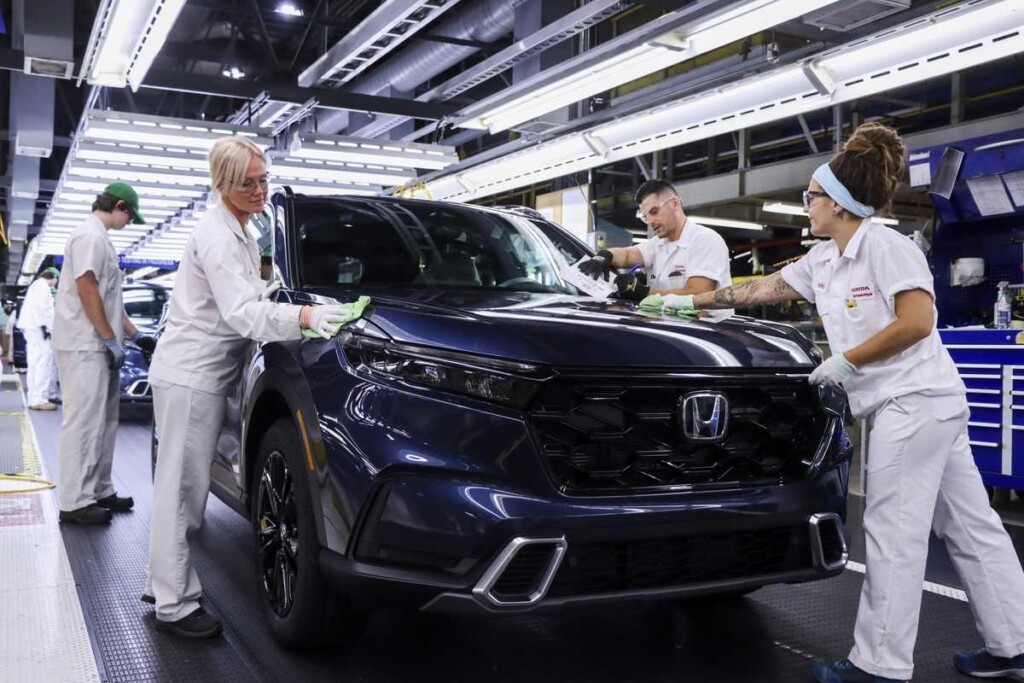






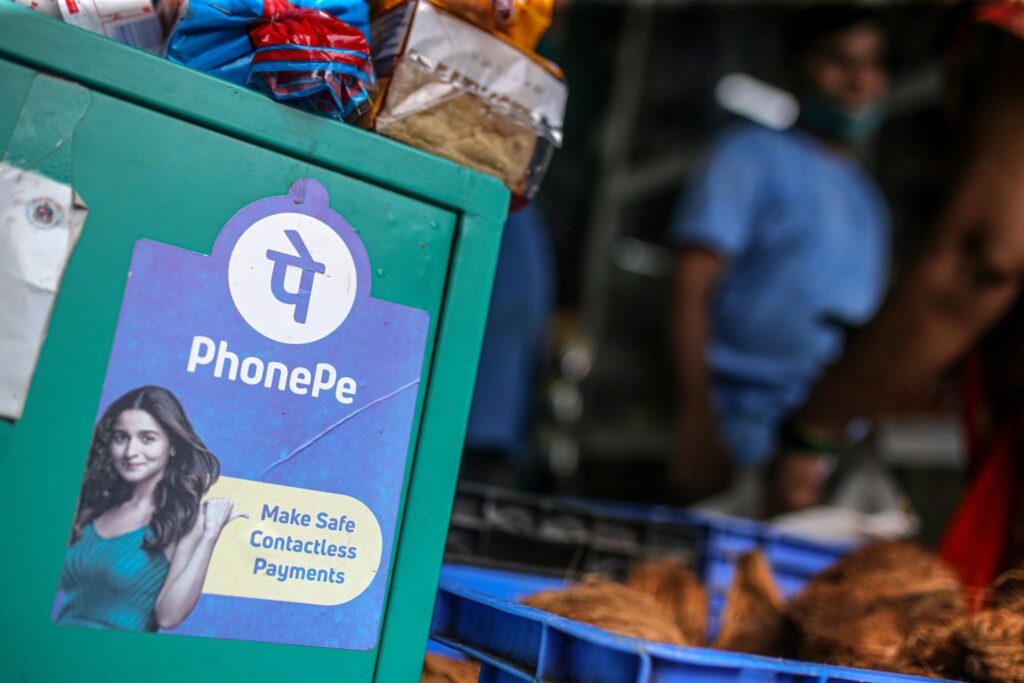 A general store advertises the use of the PhonePe digital payment system in Mumbai, India. MUST CREDIT: Dhiraj Singh/Bloomberg
A general store advertises the use of the PhonePe digital payment system in Mumbai, India. MUST CREDIT: Dhiraj Singh/Bloomberg A general store advertises the use of the PhonePe digital payment system in Mumbai, India. MUST CREDIT: Dhiraj Singh/Bloomberg
A general store advertises the use of the PhonePe digital payment system in Mumbai, India. MUST CREDIT: Dhiraj Singh/Bloomberg
“100 Years of Wonder” is the theme for Disney’s year-long promotion of the company’s centenary. From special Disney on Ice events to a retrospective at the British Film Institute and limited edition Disney100 merchandise, Disney’s celebration is big business.
The wonder and magic of Disney is consistently promoted. And yet I would argue that Disney’s greatest legacy is not its animated stories or characters, but the more mundane history of its mergers, acquisitions and intellectual property rights.
The business acumen of those behind the scenes at Disney have been central to the peaks and troughs of the company’s enduring presence in the film industry and popular culture at large.
The Walt Disney Company was founded in Hollywood by brothers Walt and Roy Disney in 1923.
Before this, along with friend and animator Ub Iwerks, the brothers had founded Laugh-O-Gram Studio in Kansas City. They then moved west with their successful silent Alice Comedies series, which featured both animation and live action.
Animation is what the Disney studio became known for. First with their shorts which included Mickey Mouse’s third outing in the studio’s first sound film, Steamboat Willie, and the Silly Symphony series. And then in their feature length films, beginning with Snow White and the Seven Dwarfs in 1937.
The first two decades of the studio established Disney’s desire for innovation and profit. This was illustrated through their early adoption of merchandising (Mickey Mouse merchandise was profitable in the mid 1930s) and various technologies, such as Technicolor and sound.
Sinking most of their profits back into their expensive animated ventures led Disney to find ways to cut costs. This included making live action nature series, television shows and opening Disneyland, their first amusement park, in Los Angeles in 1955.
While their animated products were no longer as groundbreaking as they once were, their adoption of television in the 1950s was lucrative and popular, especially The Mickey Mouse Club (1955) and Davy Crockett (1954).
Furthermore, television afforded the company the opportunity to promote their products and authenticate Disney’s position at the forefront of animation. However, live action films – quicker to make and less expensive than animation – dominated their releases in the 1960s, with stars Haley Mills, Fred MacMurray and Dean Jones appearing in multiple Disney films.
In 1966, Walt died. Roy then passed in 1971 and Walt Disney World opened in Florida the same year. In many ways, the Disney Company was never the same after the loss of the founding brothers.
The template was established for how the company would function for the next 50 years. Disney animation innovated again in the late 1980s and early 1990s through computer animation. A renaissance took place with the releases of The Little Mermaid (1989), Beauty and the Beast (1991) and The Lion King (1994).
They also expanded into cable television with The Disney Channel and founded a distribution label, Touchstone Pictures, that focused on films for adults.
There was unhappiness among animators at the studio towards the company’s bureaucracy and the perception that profits always went back into the films and not to improving working conditions or salaries (one major strike against Disney took place in 1941).
The list of former Disney animators that went on to work elsewhere or open their own animated studios is long and diverse.
Walt had learned the importance of owning rights early in his career, after he lost the intellectual property to his first successful animated character, Oswald the Lucky Rabbit. The imperative to retain proprietorship and diversify the corporation can be witnessed in many of Disney’s deals and mergers.
In 1991, Disney agreed to make films with Pixar, which has gone on to be regarded as an innovative animated studio. They later acquired Pixar in 2006.
In 1995, Disney acquired the ABC television network, which also owned the cable sports network, ESPN. In April 2004, Disney purchased the Muppets franchise. In 2009, Marvel Entertainment was acquired and Lucasfilm was bought in 2012.
Through these purchases, Disney has become one of the most significant entertainment companies in the world and one of the few early Hollywood studios that still maintains name recognition (Disney bought out 20th Century Fox in 2019).
Whereas for earlier generations Disney stood for Mickey Mouse, animated fairy-tale features and family entertainment, for younger generations, Disney is a streaming service, amusement park brand and the creator of the Star Wars universe television programming.
Traces of Walt, Roy and the pioneering animation established in the early days of the studio can be seen in their animated releases, such as Encanto (2021), and company legacy through the “reimagining” of their animated films, such as the recently released live action The Little Mermaid.
The commercial landscape of the entertainment business is always in flux. While many companies are operating their own streaming services, the long term success of these services are questionable. This is most evident in the recent writers and actors strike in Hollywood that was mainly focused on outdated royalty models that do not account for streaming media content.
Disney’s last few releases were not as successful as they had anticipated at the box office and they have lost a significant amount of Disney+ subscribers this year. However, this is a trend taking place throughout Hollywood and, while Disney is struggling, they remain a significant brand in the global media market.
And there is no question that their theme parks continue to be popular with families who want to immerse themselves in all things Disney.
The magic of Disney’s animation and the memories created at their theme parks is part of their “100 years of wonder”. But so is their successful business model that has continually adapted to changes in the entertainment business and its persistent cultural relevance.

Looking for something good? Cut through the noise with a carefully curated selection of the latest releases, live events and exhibitions, straight to your inbox every fortnight, on Fridays. Sign up here.![]()
Julie Lobalzo Wright, Assistant Professor in Film and Television Studies, University of Warwick
This article is republished from The Conversation under a Creative Commons license. Read the original article.

.jpg?ext=.jpg)
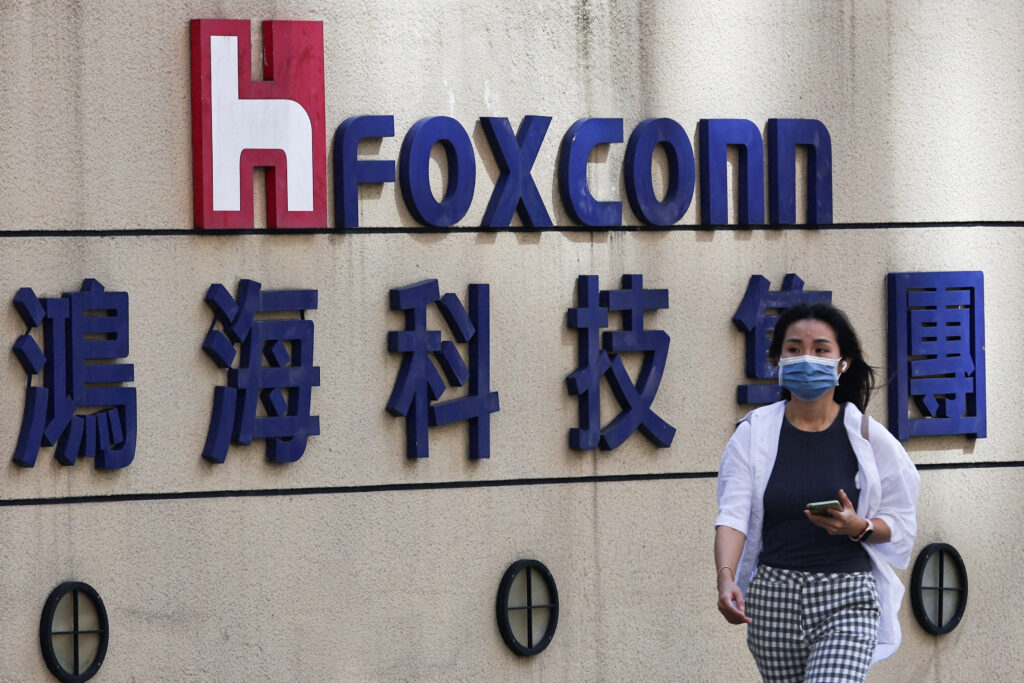 FILE PHOTO: A woman walks past the logo of Foxconn outside the company’s building in Taipei, Taiwan November 9, 2022. REUTERS/Ann Wang/File Photo
FILE PHOTO: A woman walks past the logo of Foxconn outside the company’s building in Taipei, Taiwan November 9, 2022. REUTERS/Ann Wang/File Photo
Unfortunately, many of of these enterprises won’t last long: 30% of new businesses fail within two years, and half don’t last past five, according to the Small Business Administration. While some of these unlucky founders will pursue new ventures, many others will try to rejoin the traditional labor force.
You can’t blame them. People often see “going back to work” as a safety net for risk-taking entrepreneurs. As professors of management who study entrepreneurship, we wanted to see if this was true.
So we surveyed more than 700 hiring professionals to determine whether founders really can get new jobs that easily, as well as seven former entrepreneurs who successfully made the transition back into the workforce.
We found that former business owners were actually less likely to get interviews compared with applicants with only traditional experience. This was true regardless of whether they had sold or closed their businesses. And the longer they were out of the traditional workforce, the worse their chances of success were.
Why do employers hesitate to take a chance on former business owners?
It starts at the earliest stages, with the recruiters who screen people into – or out of – consideration for interviews. We found that recruiters worried that entrepreneurs would jump ship to start their own companies as soon as they can. This is a problem for employers, since hiring is a long, expensive process that can take months or even years to pay off.
For example, one recruiter told us, “I am looking for candidates that will be long-term employees, as we invest quite a bit into each hire. When I interview people, it is generally a red flag if they say they want to start their own business or already have a business on the side.”
A related fear: A worker who leaves to start a new venture might be tempted to poach talent, clients and tactics from their old employer.
Recruiters were also concerned that former entrepreneurs may refuse to take directions. Spending time as your own boss can make it difficult to adapt to a lower place on the organizational hierarchy. As one recruiter in our study put it, former business owners “are used to being the one who makes all the decisions.”
They also raised issues of job fit, questioning whether ex-entrepreneurs’ knowledge and abilities would translate to traditional work. “The concern would be the skills they have developed don’t transfer,” said one of our interviewees. In addition, for entrepreneurs who have worked alone, it can be difficult for recruiters to know how well they’ll perform with others.
Even when a former entrepreneur is a good match for a position, recruiters can fail to make the connection because of stereotypes or misunderstandings about their experience. A former bakery owner we interviewed recalled applying for a position and being pigeonholed based on their experience: “They said, ‘Oh, I wish we were hiring for a baker!’ and I said, ‘No, no, no, I’m applying for your front office.’ It was like they thought all I knew was just a baker, but that is far from the truth.”
Our research adds to a growing body of evidence that ex-entrepreneurs struggle to get interviews and offers. Thankfully, it also offers insights that organizations can use to improve their applicant pool – and that enterprising job seekers can use to boost their odds.
Our study found that former entrepreneurs face less bias when they apply to roles that seem entrepreneurish – in other words, that are in line with stereotypes about business owners. So, for example, they’re more likely to land interviews when applying for positions with a lot of autonomy, such as in new business development, rather than those that require following lots of rules, such as in legal compliance.
Relatedly, our research suggests that recruiters – perhaps unintentionally – have biases against ex-entrepreneurs. Acknowledging such tendencies is a good first step toward minimizing their influence. Moreover, not all recruiters are equally affected: Another recent study showed that recruiters who also have prior entrepreneurial experience – as well as women and those who were recently hired – were less likely to screen out former business owners. So organizations with more diverse hiring teams and a deeper understanding of entrepreneurial experience might see less-biased results.
For their part, ex-entrepreneur job applicants would be wise to highlight in-demand aspects of their work history. For instance, a recent survey by Boston Consulting Group found that executives rank innovation as one of their top three priorities. Former entrepreneurs should emphasize their many valuable characteristics – such as being passionate and creative – that contribute to innovation.
The lack of a traditional employment history may create obstacles for entrepreneurs trying to rejoin the workforce. Recruiters who overlook their value risk missing out on strong candidates.![]()
Jacob A. Waddingham, Assistant Professor of Management, Texas State University and Miles Zachary, Associate Professor of Management and Entrepreneurship, Auburn University
This article is republished from The Conversation under a Creative Commons license. Read the original article.
The Lightning charger was introduced by Apple in 2012 and first featured on the iPhone 5. It was the successor to the 30-pin dock connector introduced in 2003 for the first iPods and iPhones. Arguably, the key visible innovation of the Lightning cable was reversible ends.
This enabled the user to insert the charger into the dock without having to wonder whether it was oriented in the right way. It might seem trivial now, but this was not the case with any other charger. If you are using the standard USB port on your laptop now, you are likely to spend a lot of time plugging the cable in and taking it out in order to find the right orientation. You’re probably also complaining about how inconvenient it is. At least, that’s what I do.
The USB-C connector came out about two years after the Lightning. There was nothing particularly novel or remarkable about it compared to Apple’s cable. However, one notable feature was that it borrowed the Lightning connector’s reversibility.
USB-C is just the name of the connector, not the entire cable. The cable and connector are part of a bigger technical specification called USB-4. USB-4 outperforms Lightning in every technical dimension conceivable. It can transfer data much more quickly: up to 40Gbps (gigabits per second) for USB-4 versus 480Mbps (megabits per second) for Lightning. It also charges devices more swiftly, to the point that Apple started selling Lightning to USB-C adaptors.
The main difference between the two, however, is that UBS-C is not proprietary. It was developed by a consortium called the USB implementer forum. This consortium is composed of companies such as Intel and Microsoft – and also Apple.
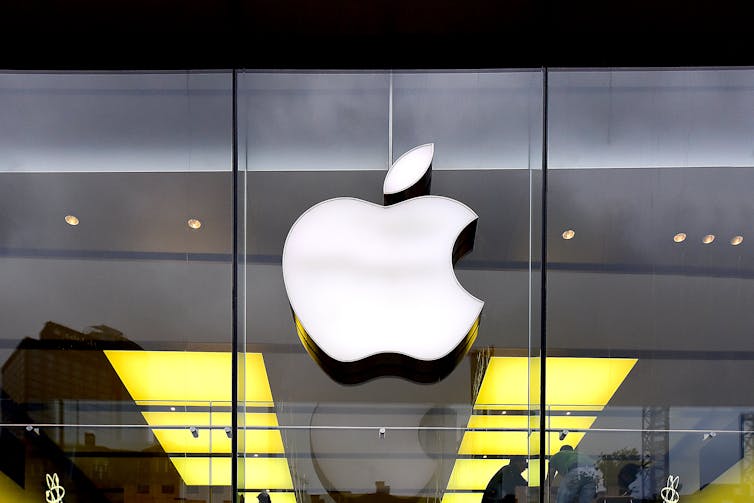 There are several possible reasons why Apple held on to the Lightning connector as long as it did. Vytautas Kielaitis / Shutterstock
There are several possible reasons why Apple held on to the Lightning connector as long as it did. Vytautas Kielaitis / Shutterstock So, what’s so special about the Lightning connection that made Apple stick with it for so long, despite repeated promises to join its competitors on a common standard? Why would Apple sabotage one of its own phones by keeping a substandard charging connection?
One possibility is that consumers are inattentive when they buy a phone, and do not directly factor in the cost of accessories such as chargers. If this is true, Apple would have needed these add-ons to remain proprietary and make sure no competitor could start offering them for a lower price. If so, forcing Apple to offer the better standard benefits all consumers.
The alternative explanation is that some consumers actually value the Lightning connection more. After all, the look is different, and Apple fans argue that it may be harder-wearing than other standards. It is also a signal of status and exclusivity.
We seem to have reached a stage in the market for smartphones where people who only care about everyday usage replace their device much less often. This is probably because technology is not evolving at the same pace it did in the past. Yet, it’s also the case that demand for high end phones continues to increase.
This could be because they cater to a subset of consumers who either greatly value a marginally higher quality of camera or slightly bigger storage. But mostly, expensive phones are a way to signal social status.
People buy the latest phone not only because they want to own it, but also to be seen as owning one. This is certainly a factor that has helped Apple thrive because the company offers products that are visibly different from the cheaper alternative. And another sign of status for Apple users is having different accessories, including the proprietary chargers.
Apple has not always been so keen to reject common standards. Not only is it one of the participants in the USB consortium, but it is also the company that helped USB become the global standard by offering it on its first generation of iMacs.
At the time, however, Apple was the underdog in the market for personal computers, facing off against the tech giant Microsoft. And a big reason why many people did not buy Apple computers at the time was their fear they would not be compatible with Microsoft products.
At one point, Apple even went as far as developing tools to help users run Windows on their devices. At the time, it made sense to try to make your products as compatible as possible with those of the market leader.
In today’s smartphone market, Apple is a leader, and may gain from not being compatible with other standards and products. The big question, however, is whether consumers benefit. If exclusivity is a way to block competition, then they probably don’t. If consumers value exclusivity, or if it encourages Apple to innovate, then perhaps forced standardisation is not such a great idea.![]()
Renaud Foucart, Senior Lecturer in Economics, Lancaster University Management School, Lancaster University
This article is republished from The Conversation under a Creative Commons license. Read the original article.
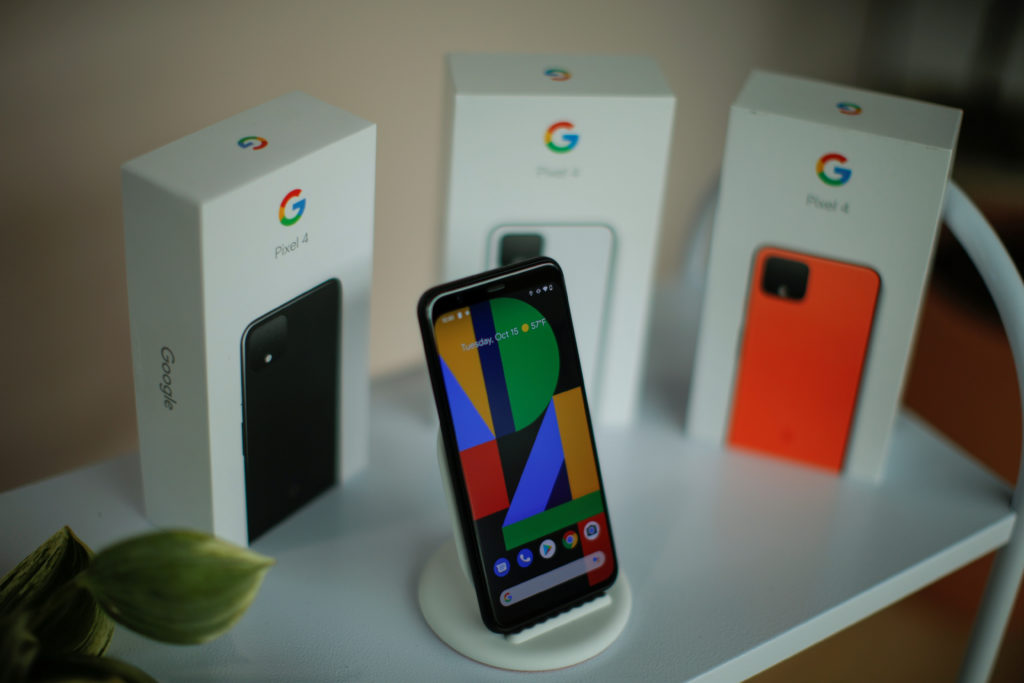 FILE PHOTO: The new Google Pixel 4 smartphone is displayed during a Google launch event in New York City, New York, U.S.
FILE PHOTO: The new Google Pixel 4 smartphone is displayed during a Google launch event in New York City, New York, U.S.